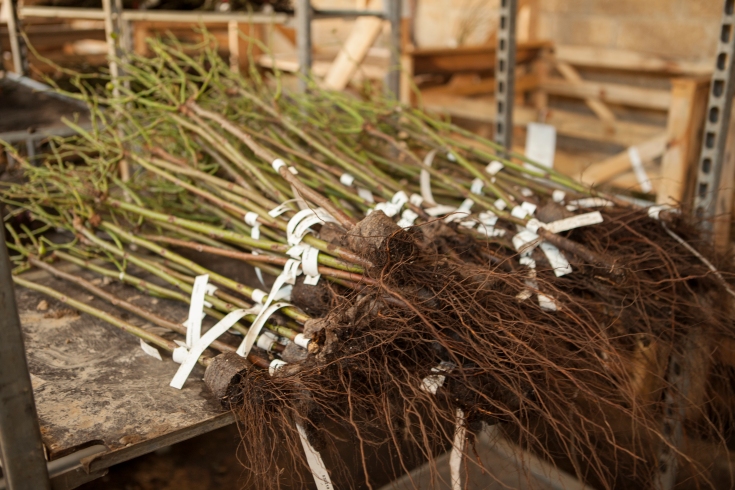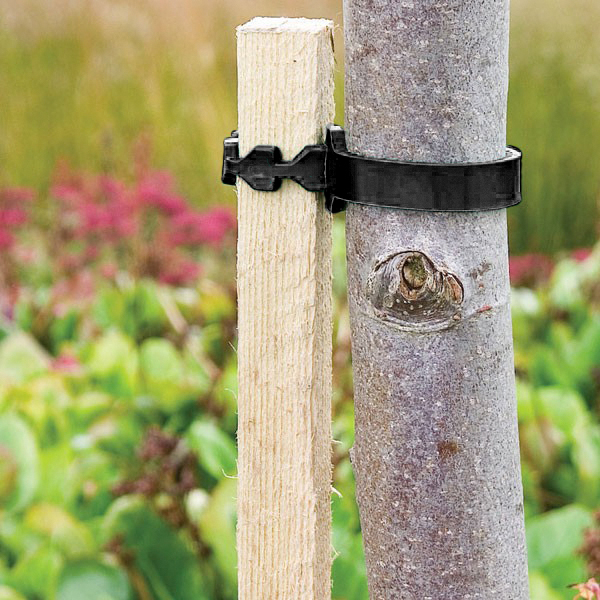We’re all about bare-root in the autumn, and now is the perfect time to plant them up, so let’s take a look at what the fuss is all about. Here a YouGarden we offer many different bare-root plants, Fruit trees, roses, trees and shrubs, and even some perennials. This means you don’t have to stay cooped up inside while there’s a chill in the air.
What Are “Bare-Roots”?

Bare-root plants are dormant, with no leaves, and with the roots out of the soil. The season runs from November to April, depending on the weather. Some larger or slower-growing plants will already be a few years old when you receive them, and ready to thrive straight away in your garden.
Planting bare-root fell out of fashion somewhat when potted plants in larger containers began to appear in the ’60s. Plants in containers are available all year round, extending the planting season for many species like roses and fruit trees, but the benefits of bare-roots are plentiful.
For one, they’re cheaper. Lifted straight from the ground and bagged, there’s no potting system or labour-intensive growing. They’ll be boxed up like any other plant and sent directly to you. But just because they’re cheaper doesn’t mean they’ll be any less successful. Bare-root plants are lifted and transported in their dormant state to reduce any damage or shock that plants in full leaf would likely suffer – a bit like how, as a child, your parents would carry you in from the car while you were fast asleep to minimise the fuss!
November is the perfect time for planting bare-root. They’ll have several months to establish themselves in the ground and get used to their new home. Try not to leave it until the end of the season, once the weather has started to warm up. This is when the soil will start to dry out quicker and the roots are likely to dehydrate and die. Next year, after months of preparation, they’ll be ready to spring to life with the change in the seasons.

How Do you Plant Bare-Roots?
Bare-root plants might seem a bit daunting on arrival, as they look a little bit like dead sticks but don’t worry. Firstly, they’re not dead, and secondly, they’re even easier than potted plants to plant!
- On receipt, soak the roots in water for at least two hours (overnight is better). If you can’t plant straight away, they should be fine for up to a week if left in a cool, dark, frost-free place. Keep the bag around the roots with some water inside. Don’t worry if the roots have been cut quite harshly – this is done to encourage the plant to grow.
- Select an appropriate spot for your plants, making sure that you give them enough space to grow. Dig a hole twice the width of the roots, forking over the bottom to loosen the soil. Then add some good quality fertiliser such as Blood Fish & Bone (wash your hands afterwards!).
- Aim to plant at the same depth as the soil mark on the trunk. Holding the tree or plant upright in position with one hand, slowly backfill the hole with soil. Gently shake the plant, so the soil falls back around the roots. Use your heel to compact the soil around the plant to ensure good contact with the roots.
- If you’re planting into pots, place some old rocks, stones or gravel in the bottom of the pot for drainage. Use the best compost you can buy – our Premium Professional Compost mix is particularly good. Add some sand or grit to aid drainage. You are again aiming to plant to the depth of the soil mark. Firm down as you fill, and press down hard with your heel when the pot is full.

How Do You Look After Bare-Roots?
or all trees, we highly recommend using our Tree Planting Kits. Each contains 3 wooden tree stakes, 3 soft rubber tree ties and a sachet of Mycorrhizal granules. You only need to support the bottom half of each trunk, so push 40cm of each stake into the soil next to each tree. With the soft tie, make a figure of eight around both the trunk and stake and fasten it off. The tree will now be better protected from strong winds.

In terms of feed, Root Boost contains millions of Mycorrhizal fungi which will colonise the roots of bare-root plants; proven to aid root growth. This will lead to the better, quicker establishment and improved health. Spread this on the roots and in the soil when planting, and ensure that it is in close contact with the roots.
Water the plants weekly – especially in dry weather – for the first 8 weeks or so and when the soil and air warm up from late March onwards, you should see the plant burst into life. Do not allow plants to dry out in the first four months after planting but once established for one season, they will become much more tolerant to a lack of water as the root system develops.
There is no real need to prune for the first two years. Whilst a lot is talked about pruning, the best advice is to prune to the shape and size you want. Remove any broken, diseased or crossing branches in late autumn or winter once the plants are well-established to control the size, then prune established trees in summer using good quality secateurs removing weak shoots and cutting out those that cross over each other to create an evenly spaced bowl shape.
For our guide to planting Bare-Root Fruit Trees, Click Here.




